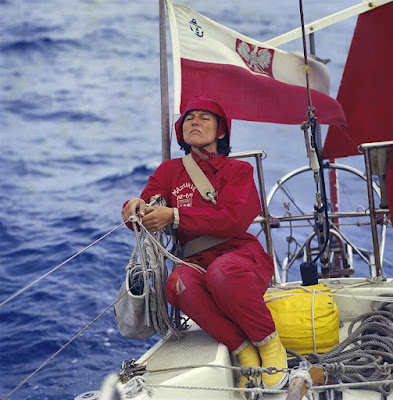March is women’s history month, so I’m dedicating this post to six intrepid female sailors deserving of wider recognition.
The first, Mary Bryant, was a convict transported from Cornwall to the fledgling penal colony at Sydney, New South Wales. She may be a contentious candidate for inclusion, as she was not a sailor by choice but the only woman in a crew of nine who completed a voyage of 5,000 km in a small open boat. On 28th March 1791, Mary – along with her husband, their children, and seven fellow prisoners – stole Governor Arthur Phillip's six-oared cutter in Sydney. One of the prisoners, William Morton, knew how to navigate and they reached Kupang in West Timor sixty-six days later. This required negotiating the treacherous and poorly-chartered waters of the Great Barrier Reef. Their little-known voyage is just as remarkable as the one undertaken by William Bligh two years earlier, after the infamous mutiny on the Bounty. Mary was arrested and sent back to England but she avoided the gallows, which was the usual punishment for escaped convicts. She was later freed and returned to Cornwall. |
| Mary Patten. |
 |
| Anna Shchetinina. |
 |
| Krystyna Chojnowska-Liskiewicz. |
Next is Krystyna Chojnowska-Liskiewicz, a Polish naval engineer and sailor. She was the first woman to sail single-handed (solo) around the world, sailing west from the Canary Islands on 28 March 1976 and returning on 21 April 1978. Her yacht, Mazurek, was only 9.51 m (31.2 ft) long. The circumnavigation took 401 days and covered 31,166 nautical miles (57,719 km).
 |
| Kay Cottee. |
A decade later, Australian sailor Kay Cottee became the first woman to complete a non-stop and unassisted single-handed circumnavigation. Her yacht, Blackmores First Lady, was 11 m (37 feet) long. The easterly circumnavigation took 189 days and set a record for the fastest sailing trip around the world by a woman. The Southern Ocean produced high winds and big seas. The following is an excerpt from her book, First Lady.
“Early in the evening, I heard a tremendous roar. It grew steadily louder. I shuddered as the bow rose higher and higher until the boat was almost vertical, then we leveled out. I knew the boat was completely out of the water…”
Finally, Jessica Watson is another Australian sailor who circumnavigated the globe solo. Watson departed Sydney on 18 October 2009 in her 10.23 m (33.6 ft) yacht, Ella's Pink Lady, returning 210 days later on 15 May 2010 – three days before her 17th birthday (top photo). At the time she was the youngest person to sail around the world but, unfortunately, the voyage was deemed shorter than the 21,600 nautical miles required by the World Sailing Speed Record Council to be considered an official global circumnavigation.
Six very different women, spanning two centuries, but all remarkable in their accomplishments.
OVER.

Comments
Post a Comment